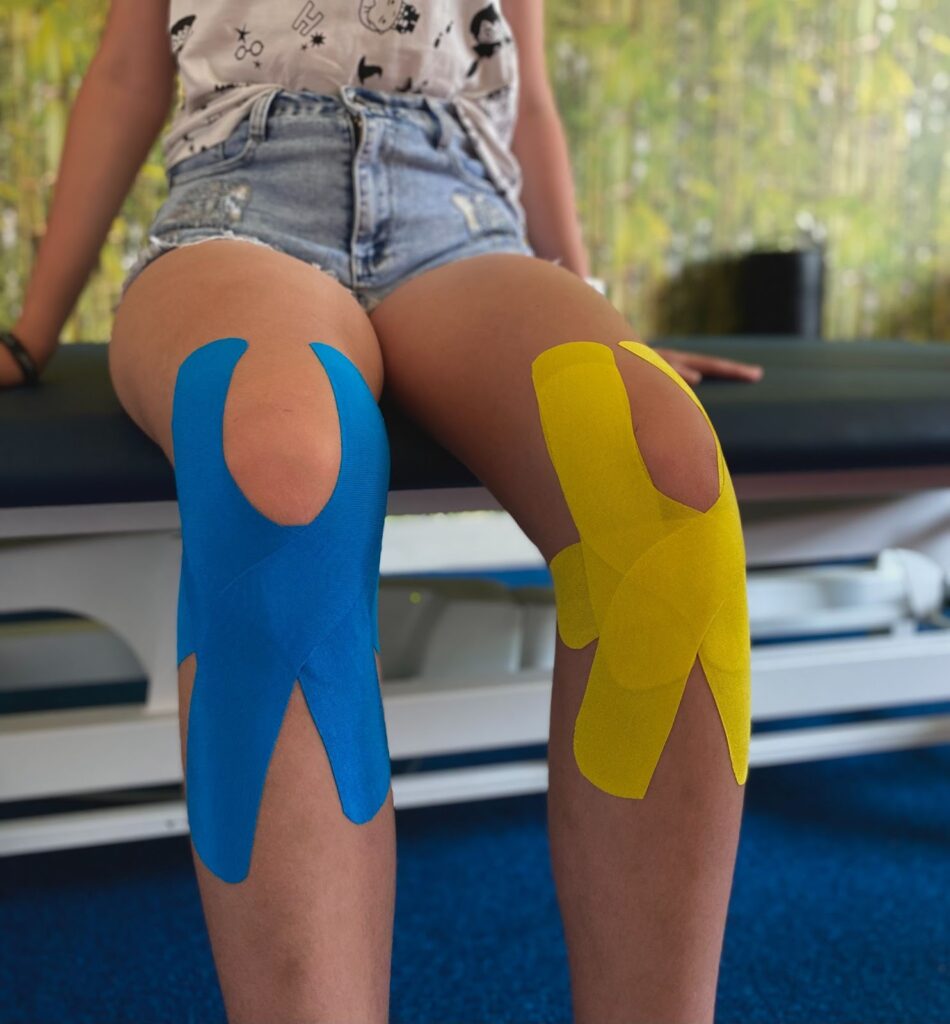Kinesiotaping (Kinesio tape) or “taping” is a method that uses special adhesive tapes to provide support to muscles or associated tissues. The method was developed by Japanese chiropractor Dr. Kasem.

Tape is an elastic adhesive tape that does not contain any medicinal ingredients, but only medical acrylic adhesive. It is waterproof, can be worn all day long and, being elastic, does not restrict the range of movement. The color of the tape is also not very important. There is no physical or chemical difference between the individual colors. For example, beige is used for minimal visibility, so the choice of color is a matter of individual client preferences.
Using simple strips or other special shapes, as well as the direction and force of the tape stretch at the time of application, the tape can be applied in hundreds of ways to different places on the body and for many diagnoses. For example, it has the ability to relieve muscle tension in the neck or sacrum, swelling in a sprained ankle, correct stability in the knee, or aid in the treatment of tennis elbow.
Dr. Kase’s idea was to use the tape as a second skin to affect the sensory motor loop between the skin and the brain, thereby inducing vasomotor, neuromuscular, and neurofascial changes to bring stressed tissues in the body back into homeostasis. The body then heals.
Simply put, by changing the position of the skin over the damaged tissue, sensory feedback is transmitted to the brain, which in response adapts and changes all tissues. Through the elastic properties of the tape, we microscopically lift the skin. By lifting this, we increase the interstitial space, allowing for a reduction in inflammation, pressure, and at the same time, we help blood and lymphatic fluid flow more efficiently to and from the target area.
Without a doubt, technique is the most important aspect in achieving the greatest therapeutic results, which is why it is important to find a specialist, a physiotherapist, who can help and advise you with your problem.